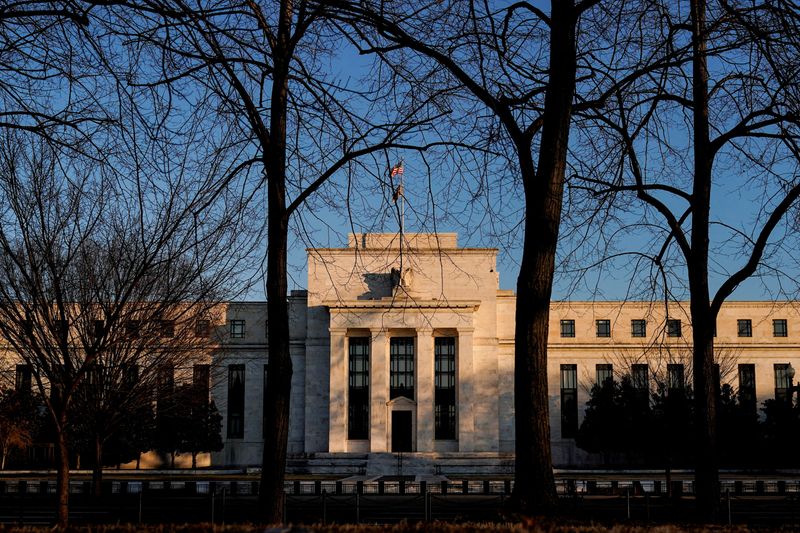By Michael S. Derby
NEW YORK (Reuters) - Wall Street's biggest banks have pushed back the expected endgame for the Federal Reserve's ongoing efforts to shrink the size of its balance sheet, according to meeting minutes for the Federal Reserve's most recent policy meeting.
Banks told the Fed ahead of the December policy meeting that they saw this process ending in June of this year, a little later than what they had told the Fed ahead of the November policy meeting, the minutes of the December Federal Open Market Committee meeting said, recounting a briefing by a New York Fed official responsible for implementing monetary policy.
The Fed's most recent meeting, held on Dec. 17-18, saw officials trim their interest rate target range by a quarter percentage point to between 4.25% and 4.5%, cut back expectations of future rate cuts and raise their estimated path for inflation.
At the meeting, the Fed did not announce anything new on its balance sheet drawdown. But it did make a technical change in the rate paid on its reverse repo facility to help induce money market funds and others to move cash off the Fed’s books and into private markets.
The minutes’ update on the outlook for the Fed’s balance sheet comes as many are looking to 2025 as the year the central bank ends its efforts to shrink its holdings via a process referred to as quantitative tightening, or QT.
After more than doubling the size of its holdings into 2022 on an aggressive spate of bond buying driven by the COVID-19 pandemic, the Fed has been working to shed holdings of Treasury and mortgage bonds to eliminate excessive liquidity. That’s taken Fed holdings from a peak of $9 trillion to just under $7 trillion.
In shedding bonds, the Fed seeks to reduce liquidity levels to a point where money markets can have normal amounts of volatility and the central bank retains firm control over the federal funds target rate range, its primary tool to influence the economy’s momentum.
Ahead of the Fed’s November meeting, big banks told the New York Fed they saw the QT process ending in May with Fed holdings at about $6.375 trillion. That would likely leave banking sector reserves at $3.125 trillion, above the current level of $2.9 trillion right now.
The challenge for the Fed has been that it is very hard to know when it’s taken out too much liquidity and overshooting the mark can lead to significant market churn, which the Fed has sought to avoid in the current episode by slowing the pace of the balance sheet drawdown.

Also occluding the outlook for the Fed are ongoing uncertainties around government financing needs during the spring as Donald Trump returns as president. There have also been some hiccups in the private repo market, which led to large volatility at the end of the third quarter, of a level that some banks finally used the Fed’s Standing Repo Facility, which provides fast cash to eligible firms, in size.
The minutes flagged a number of issues in the new year for the Fed's work on its balance sheet. It said a return of the government borrowing debt limit could make it hard for the Fed to assess liquidity conditions. Also, a back-in-force debt limit could also keep money pouring into the reverse repo facility as Treasury bill issuance would likely drop.